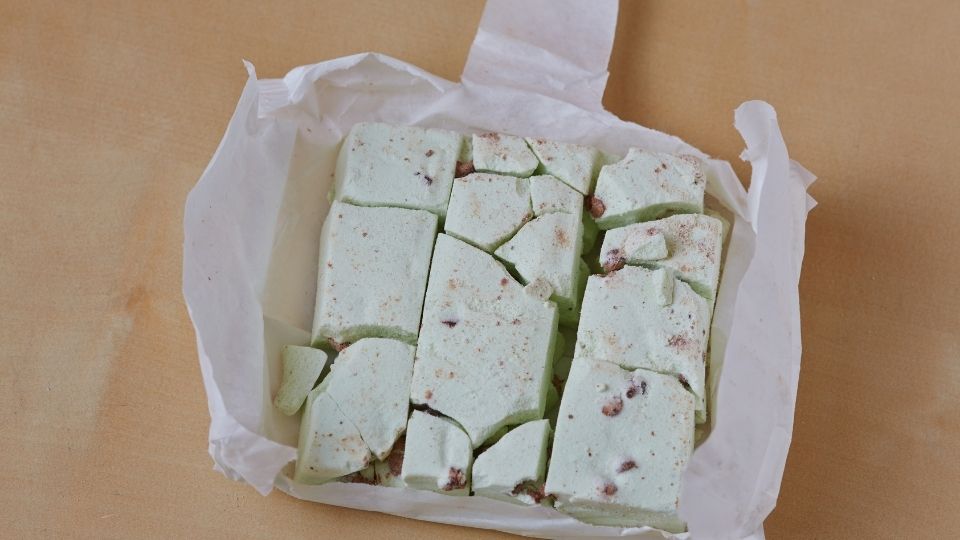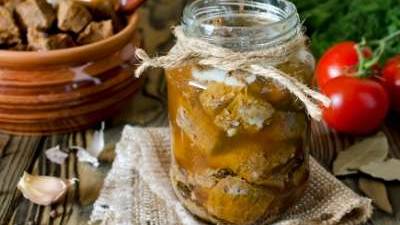Getting Crisp Home Pickled Vegetables

Crispness is a hallmark of a good pickled vegetable. That crispness comes from the vegetable’s natural pectin--the same pectin that we extract from apples and citrus to make jams and jellies.
Use only just-picked vegetables for pickling
The most important factor in getting crisp pickled vegetables is to start with fresh, just-picked vegetables. Vegetables become soft as their pectin structure changes due to microbial activity, excess heat or improper handling. As each day passes, vegetables lose crispness. Once a vegetable is soft it cannot be made firm again.
Use only top quality vegetables for pickling
For cucumber pickles, use cucumbers intended for pickling that are no more then 2 inches in diameter. Remove the blossom end. The blossom harbors microbes that can cause softening. Start with crisp raw vegetable varieties to get crisp pickled vegetables.
Use only safe, research-based recipes to pickle foods
It is important to have the proper acidity level to produce safe pickles. Only research–based recipes such as those found in the USDA Complete Guide to Canning, the National Center for Home Food Preservation Website www.homefoodsafety.com, or the Utah State University Extension Web site should be used.
Use low-temperature pasteurization
Cucumber pickles may be processed for 30 minutes at 180-185°F. Check with a thermometer to be certain that the water temperature remains above 180° during the entire 30 minutes. Keep the temperature below 185° to avoid breaking down the pectin, which will cause softening of the pickle.
Making refrigerator pickles
Instead of heat treating pickled foods, some recipes call for keeping them at refrigeration temperatures. For many years this method was thought to be safe. However, recent evidence that Listeria monocytogenes can survive in these foods has led to a recommendation against this method until further studies are performed on its safety. Until those studies are completed, it is recommended to use the low temperature pasteurization method above, even if the foods are placed in the refrigerator.
Use of alum
If good-quality ingredients are used and up-to-date methods are followed, firming agents are not needed for crisp pickles. If you choose to use firming agents, alum (aluminum potassium sulfate) may be used to firm fermented pickles, but has little crispness effect on quick-process pickles. Alum will increase firmness when used at levels up to 1/4 teaspoon per pint. Addition of greater than 1/4 teaspoon alum per pint will decrease firmness.
Use of calcium to firm pickles
Lime (calcium hydroxide) can improve pickle firmness. Food-grade lime may be used as a lime-water solution for soaking fresh cucumbers 12 to 24 hours before pickling them. Excess lime absorbed by the cucumbers must be removed to make safe pickles. To remove excess lime, drain the lime-water solution, rinse, and then re-soak the cucumbers in fresh water for 1 hour. Drain and rinse again.
Ball Calcium Chloride Pickle Crisp. This product is a food grade calcium chloride salt. It provides the calcium to help firm pectin, but does not have the hydroxide component that can lower the acidity of pickled foods. Follow the manufacturer’s directions.
Use of ice to firm pickles
Soak cucumbers or other vegetables in ice water for 4 to 5 hours before pickling.
Use of grape leaves to firm pickles
Historically, grape leaves are sometimes added to pickle products. The tannins in grape leaves were found to inhibit the pectinase enzyme (a chemical that would break down and soften the pectin structure). However, this enzyme is located at the blossom end of the cucumber and if that is removed this process is redundant.
References
Here are some of the original research publications that became the foundation for the USDA Cooperative Extension System recommendations mentioned in this publication.
- J. Kim, E. M. D'Sa, M. A. Harrison, J. A. Harrison, and E. L. Andress. 2004. Listeria monocytogenes survival in refrigerator dill pickles. IFT Annual Meeting Poster. http://www.uga.edu/nchfp/papers/2004/04iftpicklesabstract. pdf.
- Sweeney, J.P., N.E. Liming, A. Beloian, and E.H. Dawson. 1965. Effect of household processing and storage on quality of pickled vegetables and fruits. Home Economics Research Report No. 28. Agricultural Research Service: USDA.
- Etchells, J.L. and T.A. Bell. 1972. Influence of Alum on the firmness of fresh-pack dill pickles. J. Food Science. V 37. 442-445.
- Bell, T.A., and J.L. Etchells. 1958. Pectinase inhibitor in grape leaves. Bot. Gaz. 119 (3):192-196.
- Etchells, J.L., Bell, T.A., Jones, I. D., 1955. Cucumber blossoms in salt stock mean soft pickles. Research and Farming (N. C. Agric. Expt. Sta.) 13 (1-4):14-15
- Etchells, J.L. et al. 1944. Procedure for Pasteurization pickle products. Glass Packer 23(7):519.
Authors
Brian Nummer
Related Research







